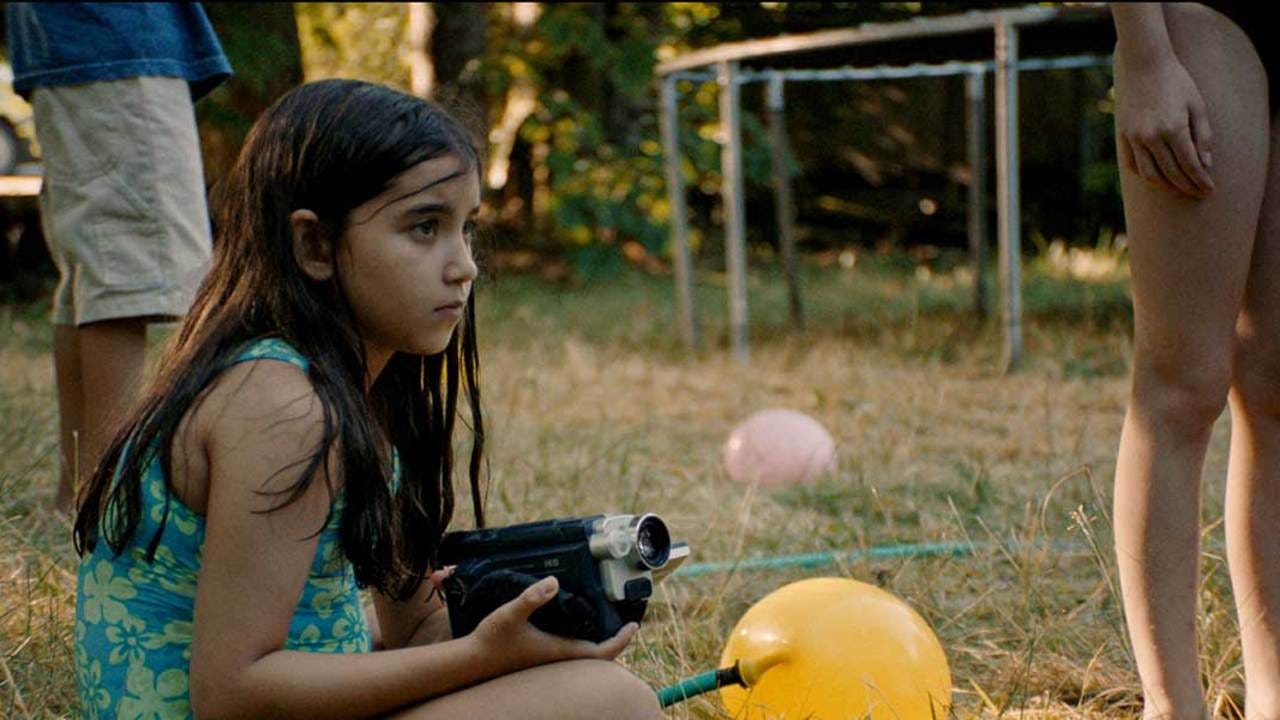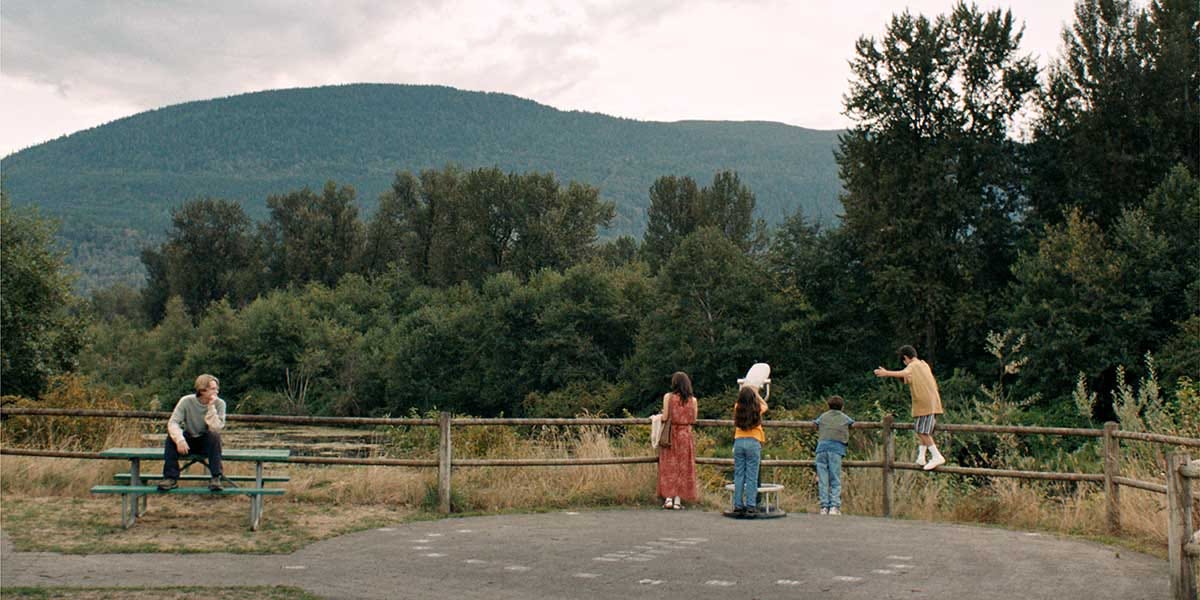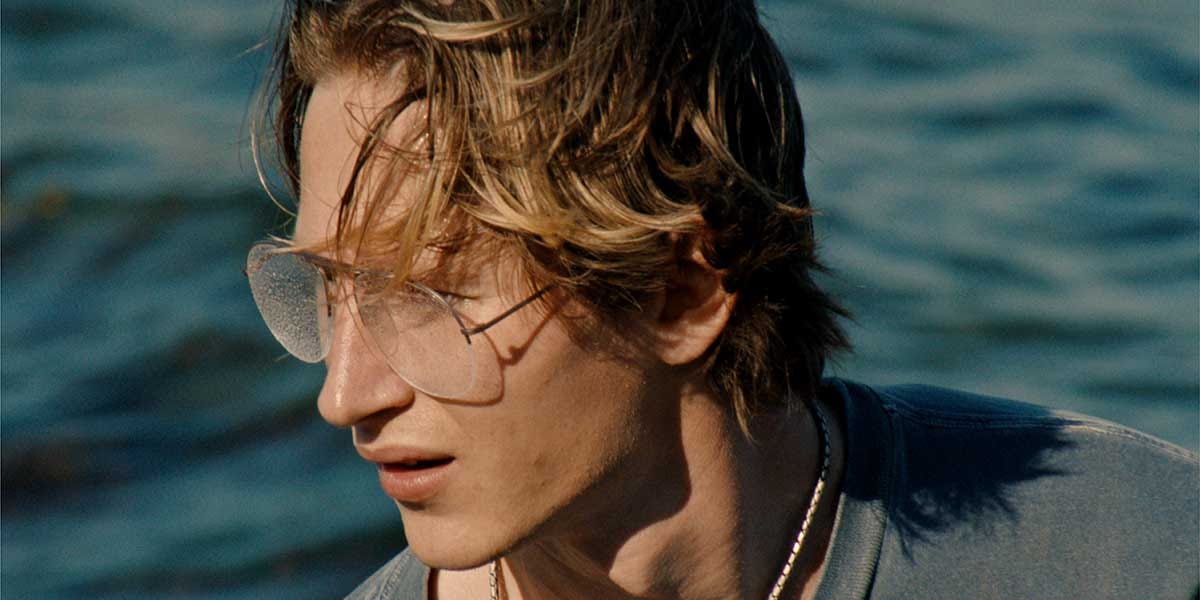TIFF '25 Day Six
A few words about Blue Heron
After totally crashing the day before, I made a big decision on the sixth day of TIFF. I was skipping my morning movie, and all my planned movies, save one. Instead of heading out to see about The Smashing Machine, I slept in a little, got up feeling fresher than I had in days, and got to work on writing that had been piling up. I finalized a piece written prior to the festival, then continued first draft of a TIFF review, before continuing work on another. Later in the morning I went down to John St. to meet Malgosia Turzanska, the costume designer of Hamnet, to talk about her work on the film for a piece that will come out later in the fall. It was a wonderful conversation. There are few things I enjoy more in my cinephilia than peppering crew members with questions about how they do their jobs. Back home, I finished that review and got started on the next before having to get to the one movie. It was all a great, productive start to a day that would only get better.
I have watched friends’ films before, and it’s always an exciting experience, but those have often been friends I know in a relatively casual way. This was different. I have known Sophy Romvari for about a decade now, and over that period, we have become real friends, good ones. It also meant years of watching as she struggled to get her first feature off the ground, one she knew she had to make, against the odds of a film production system in Canada that sometimes creates as many barriers to making movies as supporting them. When funding finally came through and the film started falling into place, all of Sophy’s friends, myself very much include, felt so much joy. This great filmmaker—whose shorts had already displayed a vision that’s one of one—and a great friend and great human being, was going to make her dream come true. What could be more exciting?
Some time before she went off to shoot the film—with a bit of prodding from myself—Sophy sent me a copy of her nearly finished script to solicit notes. I remember vividly the experience of reading that draft, how it read so cleanly and clearly, how its structural conceits presented themselves in such straightforward manner, and how bracingly honest it was. But it was still just a script. The potential for something. I was not Sophy, and I could not actually envision how what I’d read on the page would actually work onscreen. She went off to shoot it, and by all accounts it was an incredible, joyful experience for all involved, which was the first inkling that she might have made something special. A year later, finally getting to see it at last at its Toronto premiere, “special” feels like an understatement.
Blue Heron is a semi-autobiographical film based on Sophy’s childhood experience, watching with only rudimentary understanding as her family struggled with her troubled eldest brother. It’s a story Sophy has made the subject of her work before, specifically in her short Still Processing, a bracing piece of work that blends documentary and narrative storytelling to expose the wounds of terrible loss. In Blue Heron, the story focuses in and expands, working through memories of that period in her life, and reaching right into them to wrestle with events that anyone must hope were not simply inevitable, though now unalterable.
Take it all with a grain of salt, if you like, when I say that Blue Heron is one of the best debut features in years. I would be less confident in my opinion if I hadn’t been in a theatre full of people, many of whom don’t know Sophy, but who were equally wrecked by the end. I had wondered how her script would work onscreen, but it turns out she just needed to film it. Whatever gap existed between page and screen was filled by an assuredness and confidence in the story she was telling and how. I watch a lot of movies, including a lot of great debuts, but believe me, it’s rare to see one whose precision feels so natural, as though there was no distinction between the filmmaker’s vision, voice, and camera. It is a holistic expression, formed out of careful thought paired with pure intuition, and not a hint of calculation.
A devastating work of empathic understanding, Blue Heron, creates in its style and structure a unique language for processing memory. Sophy discovers a pliability in nostalgia—“the pain from an old wound,” as Don Draper once said—that opens space for literal interrogation and communion. Working with cinematographer Maya Bankovic, she develops a sun soaked picture of a family in distress, where warm surfaces become a subject of study to unearth buried truths. The camera’s roving movements, and impeccable slow zooms give the film a necessary distance, an observational approach matched by Fabelmans-like fictionalization that allows space for consideration of every frame, and every emotion contained therein.
When the film’s style begins to shift, and morph, and evolve, those emotions suddenly burst through. Quietly, but piercingly. Kurt Walker’s careful editing condenses novels worth of story and feeling into the simplest images. A sequence near the end, which, according to Sophy, only inadvertently recalls a similar one in 2001: A Space Odyssey, brings Blue Heron to a startling crescendo so powerful I felt my body convulsing while tears streamed down my face. It’s one thing to know your friend is extremely talented; it’s another to witness that talent do something so extraordinary.
After the film, which I’d attended with my mom and my roommate, we went for dinner at Bar Hop—gotta love those dollar oysters!—and what started as a conversation about Sophy and the film, led into discussions about ourselves, and our families, and others we’ve known over the years with similarly deep, old wounds. Sophy’s particular empathy for her parents, which serves as the film’s true core, is also a profound gesture to the audience. It welcomes personal association, not merely to trauma and grief, but how that trauma and grief are shared between loved ones with remarkable difficulty. The unending process of connecting with ourselves, our histories, our joys and pains, and the people around us manifests itself in Blue Heron as an offering. There is light to be found in sitting in the dark with friends and strangers, experiencing so much tragic beauty together, and then having to reckon with it together, too.
Leaving dinner, I made my way to the Blue Heron afterparty, where nobody could stop talking about the amazing film we’d seen, showering Sophy and her collaborators with endless compliments. We talked and talked and talked, and as the night wore on, the party ended, and those of us left moved on to the next party of the night and the conversation only continued. I got to speak at length with Iringó Réti, who plays the stand-in for Sophy’s mother in the film so beautifully, and who couldn’t contain her awe that she was given the opportunity to be a part of such a great work of art. It reminded me why I love film so much. The very nature of its collaboration creates endless variables, alternate universes where everything goes wrong, and that’s often what happens. When it all goes right, though, and a filmmaker is able to marshal great resources, talent, and collective dedication toward a clear vision of something singular, something new, seeing it spool out onto a big screen is literally the best thing in the world. That I can also say I’m proud of my friend is icing on the cake.




